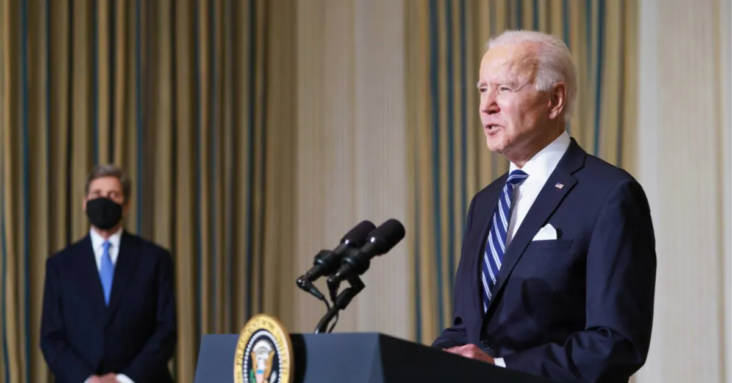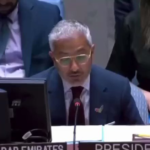
The White House is suggesting the “possible deployment” of radical climate change techniques like artificially blocking sunlight as part of its climate change agenda despite expert warnings that such initiatives can have devastating effects on the planet.
Solar radiation modification (SRM), also known as solar geoengineering, is aimed at preventing sunlight from accelerating the alleged warming of the planet.
“Greenhouse gasses warm the climate by blocking a portion of outgoing longwave radiation that would otherwise be emitted into space,” states the report (pdf), published by the White House Office of Science and Technology Policy on June 30. “By contrast, SRM cools the climate by reflecting a greater amount of incoming solar (shortwave) radiation back into space … SRM offers the possibility of cooling the planet significantly on a timescale of a few years.”
Though such artificial cooling could “reverse many of the negative consequences of climate change,” the report admits that these developments can come with “ramifications which are now poorly understood.”
The document acknowledged that the research program could help the United States prepare for a “possible deployment” of SRM through public or private actors.
SRM will not undo the consequences of greenhouse gas emissions. For instance, “SRM would not ameliorate most of the impacts of ocean acidification … nor eliminate the tendency for fossil fuel burning to worsen air quality.”
In addition, “SRM might halt but would not result in the rapid reversal of some important manifestations of climate warming, such as loss of land ice and greenhouse gas emissions from thawing permafrost.”
The report also warns about several potential negative consequences of SRM. The procedure can trigger changes in stratospheric temperatures, a rise in sea levels, acidification of oceans, and alteration in precipitation patterns. It can also affect terrestrial vegetation, biodiversity, ecosystems, crop production, and coral reefs.
“Model simulations show that the chemistry of the stratosphere may change, and atmospheric circulations may intensify in ways that may lead to seasonal-scale impacts such as more frequent extreme drought or precipitation events,” the report stated. “Gaps remain in our understanding of how SRM deployments might irreversibly alter the Earth’s climate system.”
In an open letter published in January last year, a group of scientists and scholars called for an international non-use agreement on solar engineering, arguing that such a deal will “inhibit further normalization and development of a risky and poorly understood set of technologies that seek to intentionally manage incoming sunlight at planetary scale.”
The signatories include Frank Biermann from the Copernicus Institute of Sustainable Development in the Netherlands, Melissa Leach from the Institute of Development Studies at the University of Sussex in the UK, and David Schlosberg from the University of Sydney in Australia.
“There are serious concerns about ‘locking in’ solar geoengineering as an infrastructure and policy option as well as about militarization and security,” the letter warned.
“Solar geoengineering is not necessary. Neither is it desirable, ethical, or politically governable in the current context. With the normalization of solar geoengineering research moving on with rapid speed, a strong political message to block these technologies is needed. And this message must come soon.”
Methods of SRM, US Implementation
The White House document details multiple methods to deploy SRM initiatives. One method is stratospheric aerosol injection (SAI), which involves boosting the amount of aerosols in the stratosphere to reflect sun rays away from the earth. The effect is akin to what happens during volcanic eruptions, which is followed by a cooldown of the planet.
Another method is marine cloud brightening, which involves increasing the reflectivity of certain clouds so that sunlight is reflected back.
Despite publishing the document, the White House said in a June 30 statement that the report “does not signify any change in policy or activity by the Biden-Harris Administration.”
Instead, “this report fulfills a Congressional mandate, and there are no plans underway to establish a comprehensive research program focused on solar radiation modification.”
The report was released by the White House Office of Science and Technology Policy in response to a congressional mandate in the Consolidated Appropriations Act 2022 related to SRM.
Efforts to implement solar geoengineering are already happening. Last year, a startup called Make Sunsets launched weather balloons capable of releasing reflective sulfur particles into the earth’s atmosphere, which theoretically is believed to potentially cool down the planet.
In an interview with MIT Technology Review, Make Sunsets CEO Luke Iseman said that he expects to be characterized as a “Bond villain” for what the company is doing, but insists that climate change is a threat.
Other experts have issued warnings against wantonly deploying solar geoengineering projects. David Keith, a leading expert on the subject, explained in a 2018 blog that “solar geoengineering is large-scale climate modification which inherently has global consequences that are difficult to quantify even after deployment.”



